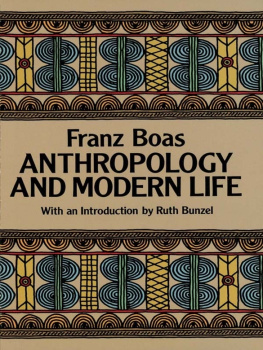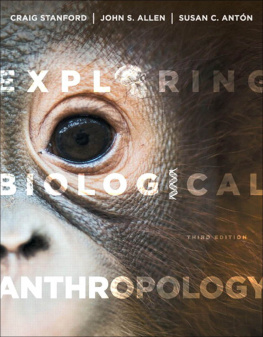Copyright 2017, 2013, 2009 by Pearson Education, Inc. or its affiliates.
All Rights Reserved. This digital publication is protected by copyright, and permission should be obtained from the publisher prior to any prohibited reproduction, storage in a retrieval system, or transmission in any form or by any means, electronic, mechanical, photocopying, recording, or otherwise except as authorized for use under the product subscription through which this digital application is accessed. For information regarding permissions, request forms and the appropriate contacts within the Pearson Education Global Rights & Permissions department, please visit www.pearsoned.com/permissions/.
Acknowledgements of third party content appear , which constitutes an extension of this copyright page.
PEARSON, ALWAYS LEARNING, and REVEL are exclusive trademarks in the U.S. and/or other countries owned by Pearson Education, Inc. or its affiliates.
Unless otherwise indicated herein, any third-party trademarks that may appear in this work are the property of their respective owners and any references to third-party trademarks, logos or other trade dress are for demonstrative or descriptive purposes only. Such references are not intended to imply any sponsorship, endorsement, authorization, or promotion of Pearson's products by the owners of such marks, or any relationship between the owner and Pearson Education, Inc. or its affiliates, authors, licensees or distributors.
ISBN 10: 0-13-401572-X
ISBN 13: 978-0-13-401572-9

Preface
We are proud to introduce you to the fourth edition of Exploring Biological Anthropology. We wrote this book because we felt there was a great need for a new textbook that presents the core information, concepts, and theories of biological anthropology in a modern light. Biological anthropology was once called physical anthropology, because decades ago the field was mainly about human anatomy, human fossils, and the study of racial variation. Over the past forty years, the field has evolved into biological anthropology. Modern biological anthropology comprises the study of the fossil record and the human skeleton, the genetics of both individuals and populations, our primate relatives, human adaptation, and human behavior, among other topics. This fourth edition of Exploring Biological Anthropology combines up-to-date coverage of the core material with a modern biological approach that includes fields that have become major areas of research by biological anthropologists over the past decade. This core-concepts version of the book is written especially for students needing to obtain a strong grounding in biological anthropology without some of the detail into which our original text delved. We three coauthors conduct our research in the main areas of biological anthropology: the human fossil record (Susan Antn), primate behavior and ecology (Craig Stanford), and human biology and the brain (John Allen). This has allowed us to provide a specialist approach to each of the broad divisions of the field covered by the text. We are biological anthropologists with extensive backgrounds in both biological and social sciences and are both teachers and researchers.
In a field changing as rapidly as human evolutionary science is today, we feel it is critical for active researchers to produce textbooks that serve the needs of students. In addition to the strong biological orientation of the book, we try to frame questions about humankind in light of our understanding of culture and the ways in which culture interacts with biology to create the template for human nature.
Undergraduate enrollment in introductory biological anthropology courses has increased sharply because biological anthropology has become one way to fulfill the basic natural science requirement at many colleges and universities. We believe the changing field and the new audience have created a need for a text such as this one, integrating traditional physical anthropology with a modern Darwinian framework and presented in a concise, clear format.
We have made an effort in the fourth edition to present a concise coverage of the core material of the field, while preserving a comprehensive coverage of certain traditionally important topics. For instance, we have included a feature on biomedical anthropology, a large feature (in Chapter ) on the brain, and behavior and biology of modern people, from the study of foragers (huntergatherers) to that of the human psyche (evolutionary psychology). There is a discussion of the geological background for human paleontology ( Chapter ), and chapter sections on bioarcheology ( Chapter ) and forensic anthropology ( Chapter ). We have double-page features in many chapters to present information in a more visual way, and we have added new information to this edition in the form of new text and figures, as well as special features in some chapters.
In a field famous for intellectual disagreements over the meaning of fossils or interpretations of Darwinian theory, weve tried to present the accepted facts and concise descriptions of debates about evidence. There are places where, because of the introductory nature of the text, we have not delved deeply into the details of some debates, but we have nevertheless tried to balance multiple views of ongoing unresolved questions.
Whats New in This Edition
In this new edition we emphasize the molecular classification system in our taxonomic discussions. Chapter has updated information on the latest taxonomic classification of the apes and hominins. We call humans and our exclusive ancestors hominins because this is the currently accepted approach.
We provide additions on newly found fossils and tools, new age estimates in the fossil record, and new ancient DNA results.
Chapter provides new art and discussion surrounding the role and relationships of Miocene hominoids.
Chapter introduces newly named species A. deyiremeda and discusses new science surrounding the diet of robust australopithecines and new ages of the little foot A. africanus skeleton.
Chapter introduces the new fossils that push the origin of the genus Homo deeper in time, provides new sections on H. habilis and H. rudolfensis, discusses new stone tools that push stone tool manufacture back past 3 million years ago, and provides up to the minute information on the newly discovered and named H. naledi from the Rising Star Cave system in South Africa.
Chapter provides new discussion of the role of archaic H. sapiens in the origin of Neandertals and Denisovans and discusses new ancient DNA results that show evidence of a Neandertal contribution to the fossil modern human genome.
Chapter presents new fossil and genetic evidence related to the origin of modern humans including evidence of Neandertal contributions to early modern humans in Europe. We also discuss new finds that illuminate our understanding of the peopling of the New World.
We have developed new Insights & Advances boxes on:
Population genetics and cultural history ( Chapter )
Locomotion of the last common ancestor of apes and humans ( Chapter )
Homo naledi and The Cradle of Humankind World Heritage site in South Africa ( Chapter ),
Early menarche and later health ( Chapter )
In addition, we have substantially updated other boxes in Chapter , , , and to include new perspectives and findings.
Many chapters have new opening vignettes to give students a different perspective on the research topics presented in each chapter. New or revised vignettes are featured in Chapters , , , , and , chosen to highlight current trends and foundational principles.
Next page










